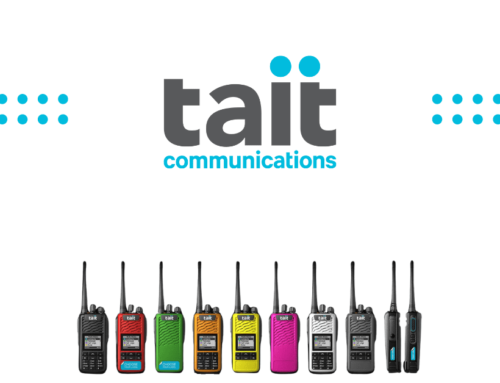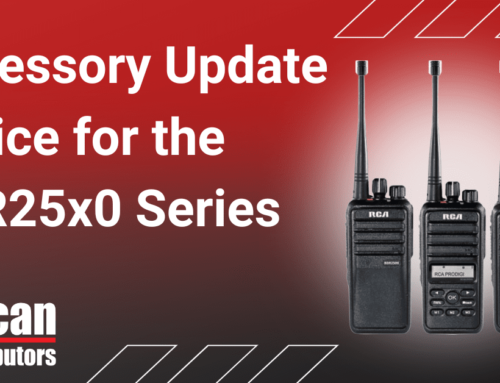What is a DAS System?
The acronym DAS stands for Distributed Antenna System, a network used to supply RF Signal (Cellular and two-way radio for Public Safety) in large buildings like schools, campuses, offices, convention centres, stadiums and arenas, underground parking garages and transit tunnels.
DAS is an essential system since the construction of these structures involves materials like drywall, concrete, and in some cases tinted windows- all which can prevent the RF signal from penetrating the framework. DAS system is also important as the RF signal can also be affected by different seasons; during spring the leaves growing can create a shield against the RF signal.
The DAS system uses a donor antenna, coax cable, amplifiers, and a series of service antenna to pass the signal through a building and to the required destination; a cellular device or two-way radio. The wireless services typically provided by the DAS system include PCS, Cellular, Wi-Fi, Police, Fire, and Emergency Services.
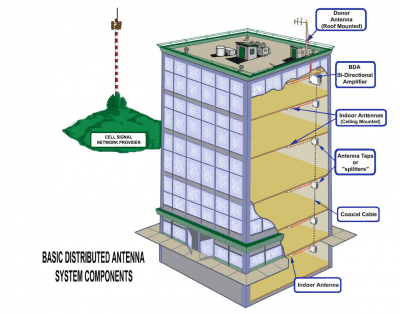
Passive DAS
Passive DAS captures the existing RF Signal with its outside antenna using either a cellular or public safety radio tower and sends it to the Amplifier or Repeater which in turn repeats it and sends it through a coax cable to service antennas.
A passive distributed antenna system is the most common and cost effective way of enhancing cellular signal inside a building as it uses fewer components compared to the active distributed antenna system.
ADVANTAGES OF USING PASSIVE DAS
- Less expensive, approximately 75% less compared to Active DAS.
- Provides coverage for all frequencies.
- Easy installation; there are fewer components since there is no signal conversion.
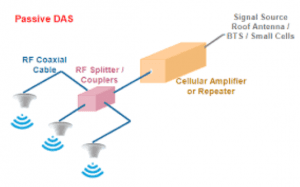
Active DAS
Active DAS generates the RF signal from a signal source commonly referred to as the “BASE STATION” or “BTS” usually located inside the structure (building) itself. The RF Signal is digitized and then converted into an Optical Signal and distributed through fiber. Once the optical solution reaches where it needs to go in the Remote Radio Head (RRU). It is then converted back into an RF signal and amplified in that area. Using Fiber or Active DAS it allows the signal to be distributed almost 100 times further than a passive DAS because there is less signal loss.
Active DAS systems can be most commonly found in stadiums, transit tunnels, skyscrapers, and outdoors where the RF signal needs/ is required to reach very long distances.
ADVANTAGES OF USING ACTIVE DAS
- Converts the RF Signal allowing long runs through fiber with no signal loss.
- It can monitor remotely through a Network Operations Centre.
- It is best suited for larger buildings.
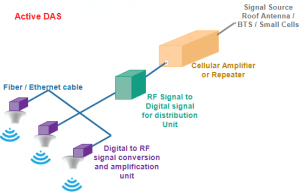
Still have Questions?
Contact us, and one of our highly trained staff would be happy to help!



